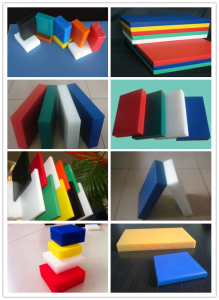- Have any questions?
- +86 185 63982630
- Lacey@peboards.com
How To Cut HDPE Boards?

Precautions For Installing Coal Bunker Liner Board
09/06/2019Why Us?
06/03/2020How To Cut HDPE Boards?

High-density polyethylene (HDPE) is a general food-grade plastic approved by the FDA and USDA. HDPE cut-resistant, milky white. Like most thermoplastics, the heat generated during cutting causes the plastic to melt and fuse together behind the cutting blade. Using the right cutting tool and lubricating the cutting area will ensure success when cutting HDPE plastic.
What tools do I use to cut HDPE Boards?
The advantage of the HDPE sheet is that it can be cut with tools that many people already have. If you treat it like wood, you will successfully cut and drill. The best results for circular or panel saws are carbide teeth. Standard router planers and jigsaw blades also cut contours that are curved or otherwise geometrical. Tool blades need to be sharp for the best results.
Depending on the thickness of the material and the cutting method required, here are three different techniques for cutting plastic.
How To Cut Thick HDPE Boards?
For straight cuts on thicker acrylic and polycarbonate plastic sheets (greater than 1/3 inch thick), a table saw or circular saw is required. Use blades specifically designed for cutting plastic, which is often packaged as “No Melt” blades. Ideally, the teeth of the blades should be evenly distributed, uniform in height and shape, and close to each other. Largely spaced teeth can cause the plastic to chip or crack. Please note that if you choose to use a regular blade instead of a “No Melt” blade, generating too much heat may melt the plastic. As a precaution, pause between cuts to allow the blade to cool.
- Mark the line to be cut with a permanent or greasy mark.
- Use the clip to secure the plastic to the work surface.
- Using a circular saw (or table saw) to cut plastic is the same as cutting wood.
How To Cut Thin HDPE Boards?
To cut directly in a thin sheet of acrylic or polycarbonate (up to 1 inch thick), pick up a simple utility knife and follow these steps.
- Use a paper clip to secure the paper to a larger working surface.
- Mark the required cutting line with a straight edge, then use a box cutter to cut the plastic sheet several times until a deep groove is formed. You may want to notch the line more than half of the plastic line.
- Turn the paper over and repeat the scoring process along the same cut line on the other side.
- The plastic is repositioned on the working surface to align the grooves with the edges of the working surface. Use a clamp to hold the plastic in place.
- Finally, the hanging part of the surface is destroyed.
How To Cut Curves?
If you want to bend or round plastic cutting, whether using a thin or thick plate, the jigsaw is the best choice. Ideally, you will use a sharp blade specifically designed for plastic. You can also use a blade marked with wood, but the friction of the blade can generate too much heat, causing the plastic to melt after cutting. To avoid this, you may need to try different puzzle settings and speeds with a piece of scrap plastic. Use the jigsaw puzzle according to the manufacturer’s instructions, and you’ll get a perfectly cut piece of plastic for your next home repair or DIY project.
ADVICE:
Always take appropriate precautions when cutting plastic. Secure the plastic sheet to the workstation with vise grips to ensure it does not move during the cutting process and wear safety glasses to protect your eyes from acrylic or polycarbonate debris. If you don’t like working on the project yourself, or if you don’t have the right tools to work with, call a professional.

